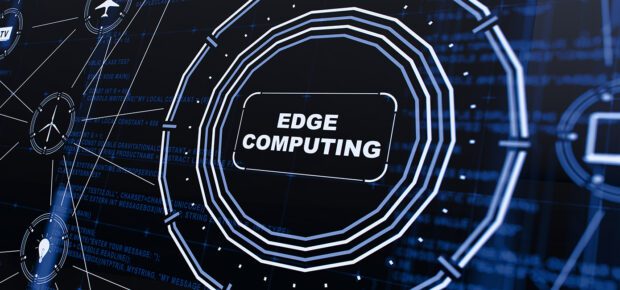May 25, 2023
In our rapidly evolving energy landscape, accompanied by escalating environmental concerns, incorporating renewable energy sources into our power grid is a significant challenge. One solution may lie in edge computing, powered by artificial intelligence (AI). Here’s why:
Power grids, the largest man-made structures globally, necessitate a delicate balance between electricity supply and demand. This balance has always been a complex task, even with centralized, large-scale power plants.
However, energy sources are shifting. Wind and solar power are gaining traction, sometimes supplying energy when it isn’t needed. The rise of electric vehicles could exacerbate demand and unpredictability. Furthermore, these vehicles might eventually serve as batteries during peak demand periods.
Moreover, the growing popularity of rooftop solar power signifies a future where energy sources are decentralized. This change complicates the prediction of precisely when and how much power to generate.
Why Does Edge Computing Matter?
Edge computing brings computing resources closer to where they are needed. As this IEEE Innovation at Work article explains, a significant amount of data processing that seems to occur on your smartphone or connected device is actually done in a data center. This process implies data must travel to the cloud and back, which takes time. Edge computing addresses this by placing a network of distributed computing resources next to where decisions are made.
“Edge computing can make the integration of renewables in the electricity grid more effective,” said IEEE Member Mauricio Salles. “It can enable better monitoring and control, including real-time, and the generated data can be processed and analyzed locally in real-time to reduce the traffic of data. With this data, it is possible to improve grid stability, enhance predictive maintenance and optimize energy management.”
How AI Helps
AI advancements offer new ways to make optimal decisions in a computationally efficient manner, said IEEE Member Kyri Baker.
This optimization isn’t just for grid stability – although that’s a substantial benefit.
“The power grid has an increasing number of sensors and therefore measurements which are currently under-utilized in grid planning and operation,” Baker said. “With AI, we can more effectively use this data to make decisions, predictions and forecasts.”
The December 2022 edition of IEEE Electrification Magazine, the article, “Bringing Artificial Intelligence to the Grid Edge,” provides an example, highlighting that “the estimated 185 million utility poles in the United States can reduce the tens of millions of dollars spent each year by utilities to manually track and maintain grid infrastructure.”
Efficiency, Resiliency and Cybersecurity
Baker notes that electricity traveling over long distances incurs minor losses. These losses can be mitigated when power is generated closer to demand.
“Fewer losses result in improved energy efficiency, and often, in carbon emission reductions,” Baker said. “And being able to process that data more locally can result in less reliance on communication systems or cloud-based computing, making the system more robust overall.”
Learn more: Want to see scholarly research on climate change all in one place? Check out the IEEE Xplore Climate Change Collection.





 Quantum and AI: Safeguards or Threats to Cybersecurity?
Quantum and AI: Safeguards or Threats to Cybersecurity? Why AI Can't Live Without Us
Why AI Can't Live Without Us Bits, Bytes, Buildings and Bridges: Digital-Driven Infrastructure
Bits, Bytes, Buildings and Bridges: Digital-Driven Infrastructure Impact of Technology in 2024
Impact of Technology in 2024 Emerging AI Cybersecurity Challenges and Solutions
Emerging AI Cybersecurity Challenges and Solutions The Skies are Unlimited
The Skies are Unlimited Smart Cities 2030: How Tech is Reshaping Urbanscapes
Smart Cities 2030: How Tech is Reshaping Urbanscapes Impact of Technology 2023
Impact of Technology 2023 Cybersecurity for Life-Changing Innovations
Cybersecurity for Life-Changing Innovations Smarter Wearables Healthier Life
Smarter Wearables Healthier Life Infrastructure In Motion
Infrastructure In Motion The Impact of Tech in 2022 and Beyond
The Impact of Tech in 2022 and Beyond Cybersecurity, Technology and Protecting Our World
Cybersecurity, Technology and Protecting Our World How Technology Helps us Understand Our Health and Wellness
How Technology Helps us Understand Our Health and Wellness The Resilience of Humanity
The Resilience of Humanity Harnessing and Sustaining our Natural Resources
Harnessing and Sustaining our Natural Resources Creating Healthy Spaces Through Technology
Creating Healthy Spaces Through Technology Exceptional Infrastructure Challenges, Technology and Humanity
Exceptional Infrastructure Challenges, Technology and Humanity The Global Impact of IEEE's 802 Standards
The Global Impact of IEEE's 802 Standards Scenes of our Cyber Lives: The Security Threats and Technology Solutions Protecting Us
Scenes of our Cyber Lives: The Security Threats and Technology Solutions Protecting Us How Millennial Parents are Embracing Health and Wellness Technologies for Their Generation Alpha Kids
How Millennial Parents are Embracing Health and Wellness Technologies for Their Generation Alpha Kids Space Exploration, Technology and Our Lives
Space Exploration, Technology and Our Lives Global Innovation and the Environment
Global Innovation and the Environment How Technology, Privacy and Security are Changing Each Other (And Us)
How Technology, Privacy and Security are Changing Each Other (And Us) Find us in booth 31506, LVCC South Hall 3 and experience the Technology Moon Walk
Find us in booth 31506, LVCC South Hall 3 and experience the Technology Moon Walk Virtual and Mixed Reality
Virtual and Mixed Reality How Robots are Improving our Health
How Robots are Improving our Health IEEE Experts and the Robots They are Teaching
IEEE Experts and the Robots They are Teaching See how millennial parents around the world see AI impacting the lives of their tech-infused offspring
See how millennial parents around the world see AI impacting the lives of their tech-infused offspring Take the journey from farm to table and learn how IoT will help us reach the rising demand for food production
Take the journey from farm to table and learn how IoT will help us reach the rising demand for food production Watch technical experts discuss the latest cyber threats
Watch technical experts discuss the latest cyber threats Explore how researchers, teachers, explorers, healthcare and medical professionals use immersive technologies
Explore how researchers, teachers, explorers, healthcare and medical professionals use immersive technologies Follow the timeline to see how Generation AI will be impacted by technology
Follow the timeline to see how Generation AI will be impacted by technology Learn how your IoT data can be used by experiencing a day in a connected life
Learn how your IoT data can be used by experiencing a day in a connected life Listen to technical experts discuss the biggest security threats today
Listen to technical experts discuss the biggest security threats today See how tech has influenced and evolved with the Games
See how tech has influenced and evolved with the Games Enter our virtual home to explore the IoT (Internet of Things) technologies
Enter our virtual home to explore the IoT (Internet of Things) technologies Explore an interactive map showcasing exciting innovations in robotics
Explore an interactive map showcasing exciting innovations in robotics Interactively explore A.I. in recent Hollywood movies
Interactively explore A.I. in recent Hollywood movies Get immersed in technologies that will improve patients' lives
Get immersed in technologies that will improve patients' lives